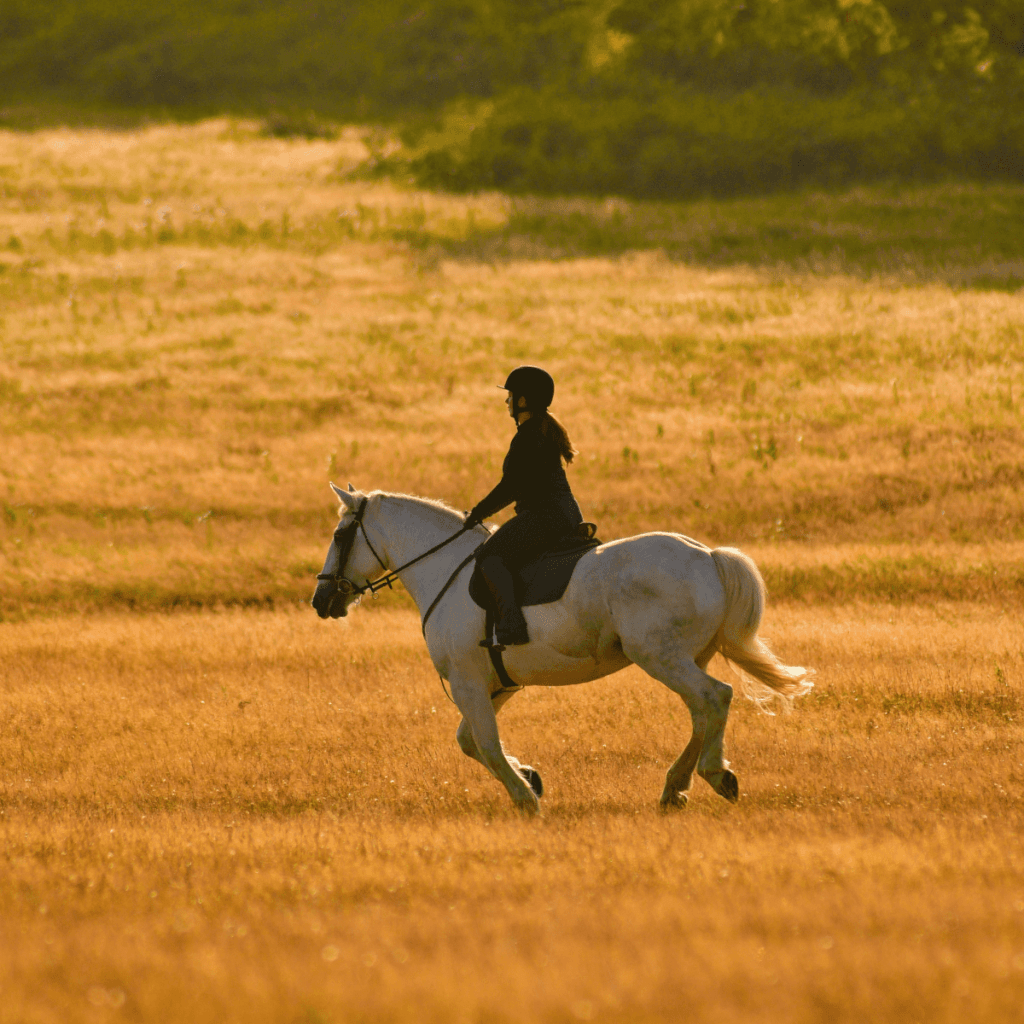As a horse owner, you may be wondering about the best way to feed your horse before and after riding.
Proper nutrition is essential for your horse’s health, energy levels, and performance, and the timing of meals can play a significant role in how your horse feels during exercise. In this article, we’ll explore what you should feed your horse before and after riding to keep them healthy, energized, and performing at their best.
Feeding Your Horse Before Riding
The way you feed your horse before exercise plays a key role in ensuring they have enough energy without feeling sluggish or uncomfortable. Here are some important considerations:
1. Avoid Feeding a Large Meal Right Before Riding
Feeding your horse a large meal immediately before riding is not recommended. When your horse eats a large amount of food, blood flow is directed to the digestive system to help with the breakdown of the food. This can leave less blood available for muscle function, which may make your horse feel sluggish or uncomfortable during exercise.
It’s generally recommended to wait at least 1.5 to 2 hours after a large meal before riding your horse. However, the exact timing depends on the size of the meal, your horse’s metabolism, and the intensity of the exercise. If your horse has eaten too recently and you need to ride, opt for lighter work or a slower pace to avoid discomfort.
2. Focus on Forage and Small, Easily Digestible Meals
Before riding, it’s best to feed your horse a small meal that is primarily made up of forage, such as hay or pasture grass. Forage is easier on the digestive system and provides slow-releasing energy. Some owners also feed small amounts of grain or concentrates if they plan to engage in more strenuous work, but these should be given at least an hour before riding.
It’s important to ensure that your horse always has access to hay or pasture before riding. If your horse is kept in a stall, providing hay ensures they maintain a steady source of fiber for digestion and energy.
3. Hydration Is Key
Before you ride, make sure your horse has access to fresh, clean water. Dehydration can quickly affect performance and cause fatigue. Horses can drink more water when they are kept hydrated and are more likely to perform better during exercise. Avoid riding your horse immediately after drinking large amounts of water, as it may lead to discomfort or colic. Instead, let them drink small amounts regularly, especially if they have been working for a long time.
Feeding Your Horse After Riding
Proper nutrition after riding is just as important as feeding before exercise. The goal is to help your horse recover, replenish lost nutrients, and support muscle repair. Here’s what you should keep in mind when feeding your horse after exercise:
1. Wait for Cooldown
After exercise, give your horse some time to cool down before offering them food. It’s best to allow your horse to walk at a relaxed pace for 10-15 minutes after riding to help their muscles recover. This allows their heart rate to return to normal and promotes the removal of lactic acid from their muscles. Once your horse is cooled down and breathing normally, you can offer food.
2. Offer Forage First
After a ride, start with hay or pasture. Forage is the most important part of your horse’s diet and should be available at all times. Feeding hay helps replenish the energy your horse expended during exercise in a healthy, gradual way. Ensure your horse has access to high-quality hay that meets their nutritional needs.
3. Provide Electrolytes and Water
Horses lose electrolytes through sweat, especially during intense exercise. Providing an electrolyte supplement after riding can help your horse replenish lost minerals and prevent dehydration. You can mix electrolytes in water or feed them as a top dressing on your horse’s grain.
Make sure your horse has access to fresh water after exercise. Some horses drink more eagerly after working, while others may be reluctant to drink. Encourage drinking by offering water immediately after the ride, and try to keep it clean and cool.
4. Grain or Concentrates (If Needed)
If your horse is working at a high intensity or has a greater energy requirement due to exercise, you can offer grain or concentrates after riding to help restore glycogen stores and promote recovery. However, avoid overfeeding grain, as this can lead to digestive issues such as colic or laminitis. The quantity of grain or concentrates should be based on your horse’s size, activity level, and specific dietary needs.
If you feed grain, give it in small amounts over the course of a few hours instead of one large meal to avoid overloading your horse’s digestive system.
5. Monitor for Colic or Digestive Upset
Some horses are more prone to digestive upset after exercise. After riding, monitor your horse for signs of colic or discomfort. If your horse seems bloated, refuses to eat, or exhibits signs of pain, contact your veterinarian immediately.
What to Avoid When Feeding Before & After Riding
When managing your horse’s diet before and after riding, it’s important to avoid certain practices:
- Avoid Overfeeding or Underfeeding: Both can cause problems. Overfeeding before a ride can cause discomfort, while underfeeding can lead to low energy and poor performance. Make sure you adjust your horse’s feeding schedule and portion sizes to match their workload.
- Don’t Feed Immediately After Intense Exercise: Giving your horse a large meal immediately after heavy exercise can lead to digestive upset or colic. Allow them time to cool down first.
- Avoid Large Amounts of Grain: Feeding too much grain, especially before riding, can lead to digestive issues, nervousness, or energy spikes that can interfere with performance. Stick to smaller, more frequent meals and make forage the base of your horse’s diet.
Click Here Buy Horse Riding Helmet




